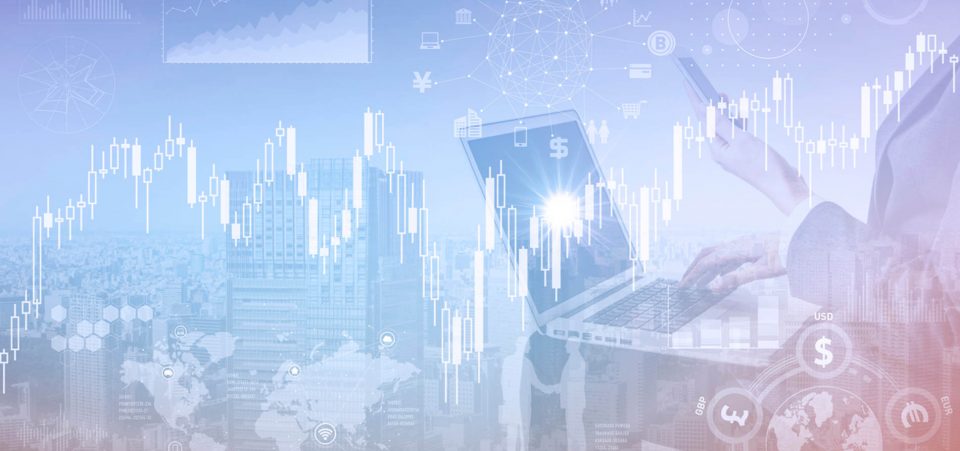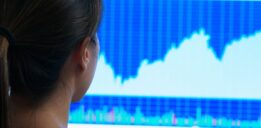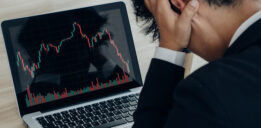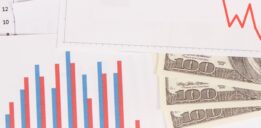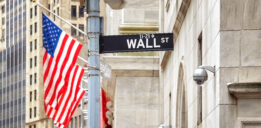Marc Faber Warns There Is a Bubble in the U.S. Stock Market
Some call him “Dr. Doom.” Others prefer “Doctor Ruin.” I just call him Marc Faber, realist. Some may accuse him of being overly pessimistic about the state of the financial markets, but at no time are his opinions more necessary than the present. It should not come as a surprise that Marc Faber believes in a possible U.S. stock market bubble in 2017.
The NASDAQ has risen from some 5,000 points to a record 6,320 in a year. So, there was suspicion of a tech bubble. A suspicion that Snap Inc (NYSE:SNAP), which was floated on Wall Street to rave reviews, closing at $27.00/share on March 2 easily confirms. It’s now trading at $18.00/share.
But, if, while watching the Dow Jones’s rise above 21,000, you found yourself wondering: “Is the U.S. stock market heading for a bubble?” Marc Faber will be happy to confirm this. It’s not just a tech bubble, as many have suspected. Just like the Beach Boys in 1964, the stock market bubble gets around. It hasn’t spared a single thing. (Source: “Marc Faber—aka Dr. Doom—warns that in financial markets ‘there is a bubble in everything’,” MarketWatch, June 1, 2017.)
Marc Faber has earned the right to offer such bold predictions on the state of the financial markets. Typically, rather than targeting specific stocks, the Swiss investment expert is an equal opportunity pessimist. When he sees trouble, he sees it at a macro scale. Thus, he will usually identify the overall market, a group of countries, and/or a specific sector as suffering from “optimitis” (i.e. bubble syndrome).
These days, Wall Street is operating along two parallel but related bubble lines. The first is the bubble of its insular nature. Wall Street seems oblivious to what’s happening as far as U.S. economic growth is concerned. The markets are ignoring the warning signs that are pointing to a weaker U.S. economic outlook in 2017.
It’s not just that auto sales are down. (Source: “Auto Sales Fall for Fourth Straight Month,” Bloomberg, May 2, 2017.)
The economy has shown clear signs of weakness at the very seams. Perhaps the most obvious, but also the most overlooked sign is the state of the retail sector. The traditional brick-and-mortar shop is going out of fashion faster than disco music in 1980.
Various store chains, the big ones, have announced closures and job cuts. Recently, Hudson’s Bay Co (TSE:HBC), aka “The Bay,” said it would have to cut some 2000 jobs. The Bay might not mean much to Americans, but it happens to own Saks Fifth Avenue. Where would Christmas in New York be without Saks? Well, it’s one of the big store chains that’s feeling the pressure in the United States. But it’s hardly unique. There’s no end in sight to the hemorrhage of jobs.
It’s recent news that the Ascena Retail Group Inc (NASDAQ:ASNA)—owner of such retail brands as Ann Taylor, Dress Barn, Loft, Lane Bryant, Justice, Maurices and Catherines stores—will have to close anywhere from 250 to 650 locations over the next two years. (Source: “IT’S COLLAPSING: Ann Taylor, Dress Barn, Loft and Lane Bryant announce 650 stores closing over the next two years,” Government Slaves, June 12, 2017.)
Retail Is Going Down: Bad Sign for the Economy
And there’s more. Nordstrom, Inc. (NYSE:JWN) might soon spare the company the embarrassment of a free-fall stock price effect. It’s pondering taking the company private amid the pessimism that has enveloped the retail sector. (Source: “Nordstrom ready to make ANOTHER brilliant move as the rest of retail sinks,” Wealthy Debates, June 12, 2017.)
And there are others lining up to either close down shops, go private, or shut down altogether. Retail is a barometer for the economy as a whole. When people go shopping, they—generally—feel confident about their economic prospects. Even as online shopping can explain the eroding appeal of retail shops, there’s a bigger syndrome at play. Wall Street and Main Street are not communicating; they’re not even on the same wavelength and possibly not on the same planet. Look at the Shiller P/E ratios.

If there’s one thing that the present stock market bubble shows, it’s this very disconnect. Overvalued stocks and their prevalence shows that the market hand doesn’t know what the economy hand is doing. Faber has been bold enough to point it out and show that the emperor has no clothes, as it were. Marc Faber’s stock market predictions for 2017 reflect this thinking.
Faber starts from the underlining of the profound historical changes taking place. One of these is the shift in economic power that is happening, whether or not the West likes it. Economic strength is shifting away from the West and towards the so-called emerging economies. Of course, China and India are in the lead, but Vietnam, Indonesia, and the Philippines are close behind.
Such shifts shake the economic, monetary, and fiscal policies of the West. The U.S. along with its G7 and OECD peers look for ways to address their relative decline. But more often than not, they end up making mistakes. One such mistake is to think that protectionism, as Trump intends to do, would work in the face of such an interconnected market. It would simply hurt American companies.
A Gigantic Asset Bubble
The bigger issue of concern is that the market is experiencing a phenomenon that can only be described as a gigantic asset bubble. Faber has observed—and it doesn’t take a special set of eyes to notice this—that the nature of the bubble itself has changed. It’s no longer a question of a specific asset class that experiences a bubble phase, like the tech bubble of the late 1990s and early millennium or the financial and real estate bubbles.
The present bubble is an equal opportunity one; it has affected all asset classes. That’s why we have the Dow at well past 21,000 and the NASDAQ at well past 6,000. It’s not a bubble any longer; it’s a blob. Everything is inflated, from stocks to real estate, amid runaway debt.

The fact that such inflationary trends are occurring in an apparent ignorance of average wages is the paradox. That’s why the risk of a stock market bubble burst in 2017 is so high. In this context of swelling debt-financed assets, it’s no longer about how to maximize profits. Rather, it’s about how to invest to risk losing less money.
In the United States, the stock markets are flying high like Icarus, who got too close to the sun. His wax wings melted and he crashed. But in the U.S., it’s not just a matter of stocks trading so high. The dollar is also trading very high compared to other currencies. The probability that rates will go up again means that Trump’s hopes of a lower dollar value will be trumped. A lower dollar is crucial if U.S. goods are to remain competitive abroad. Especially, in a climate of protectionism, where the U.S. stops participating in the various international trade mechanisms.
Marc Faber Would Tell You to Short Wall Street
It’s likely that Marc Faber would advise his friends and clients to short Wall Street, perhaps go long on emerging markets, while grabbing some silver, platinum and gold. As for Donald Trump, Faber warns that his plans to raise employment levels cannot work in the long term. Trump wants to boost U.S. gross domestic product (GDP) by three percent. But, there’s the phenomenon of robotization, or automation if you will, that will alter the entire workforce landscape and the economy with it.
The danger is that everything looks great for the time being. Thus, many investors, even savvy and seasoned ones, will not pay enough attention to Faber’s warnings. Contrarians like Faber are wrong, until everything they said turns out to be right. But market crashes happen much faster than the next stock market bubble inflation.
Meanwhile, the dangers stock market bubble consequences are much more powerful than the benefits of crashes. So it’s not even a matter of a trade-off. The risks of a market bubble explosion are too high now to ignore Faber.
The Dow Jones index beat a new historic high at 21.305.35 points. The index of major U.S. industrial stocks has climbed by more than seven percent since January 2017. The same goes for the Nasdaq. But, even the tech hits like Amazon.com, Inc. (NASDAQ:AMZN) Apple Inc. (NASDAQ:AAPL), Facebook Inc (NASDAQ:FB) and Tesla Inc (NASDAQ:TSLA) have, yes, risen. But, they’ve also experienced big dips this year.
Indeed, several observers like Faber are beginning to worry about the valuation of U.S. stocks. The U.S. equity market has been thriving but it has fueled a bubble for some time. That’s because the market is rising faster than earnings and higher than the real economy warrants. It’s not just Faber.
The alarm bells have managed to reach other financial experts’ ears. Bill Gross, the emblematic manager of Janus Capital Group Inc (NYSE:JNS), has warned that the level of risk for the U.S. market is at the highest since the 2008 financial crisis. He warns that investors are not buying low and selling high, they’re buying high and crossing their fingers. (Source: “Bill Gross Says Market Risk Is Highest Since Pre-2008 Crisis,” Bloomberg, June 7, 2017.)
The risks aren’t simply financial. They’re political. Bogged down in the difficulties, Donald Trump’s presidency appears to have hit a standstill. Trump has been politically maimed and it is unlikely that 2017 will see the shadow of a tax cut and even less of a stimulus plan. That could be enough to burst the whole bubble.

